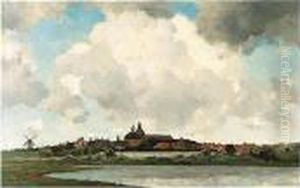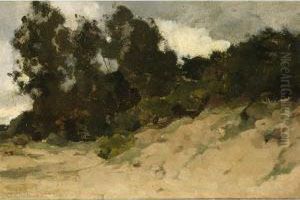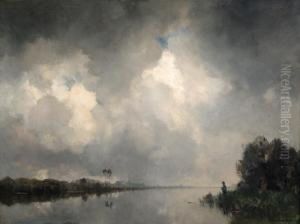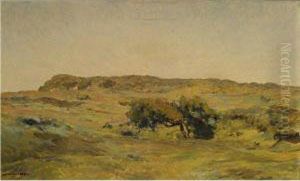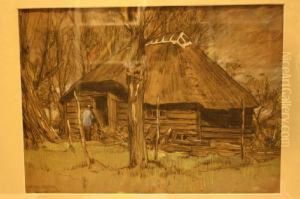Ludwig Willem R. Wenckebach Paintings
Ludwig Willem Reymert Wenckebach, known as L.W.R. Wenckebach, was a Dutch painter, graphic artist, and illustrator born on September 17, 1860, in The Hague, Netherlands. Wenckebach's early education was in engineering, but his passion for art led him to pursue a career in the visual arts. He initially trained at the Polytechnic School in Delft and subsequently studied at the Academy of Fine Arts in The Hague.
Wenckebach's artistic style was eclectic, yet he was particularly known for his landscapes, cityscapes, and his work as a lithographer. Throughout his career, he developed a keen eye for capturing the essence of Dutch life and scenery. His work often depicted the interactions between humans and their environment, rendered with a sensitivity to light and atmosphere that was characteristic of the Dutch artistic tradition.
In addition to his paintings and prints, Wenckebach was a respected illustrator, contributing to various publications and books. His illustrations were characterized by a clear line and careful attention to detail. His ability to translate narratives into compelling visual stories made his illustration work particularly sought after.
Wenckebach was also a part of the Amsterdam Impressionism movement, albeit not as prominently as some of his contemporaries. Despite this, his work shares the Impressionist sensibilities of the time, with an emphasis on light and color.
During his lifetime, Wenckebach was a member of various artistic societies, including Arti et Amicitiae (Art and Friendship) in Amsterdam, which was a hub for artists, architects, and patrons. He also taught at the School of Applied Arts in Haarlem, where he influenced a number of younger artists.
L.W.R. Wenckebach continued to work and exhibit throughout his life. His work was well received, and he participated in numerous exhibitions, both in the Netherlands and internationally. Wenckebach died on November 24, 1937, in Santpoort, leaving behind a legacy that is still appreciated by art historians and collectors. His work remains a testament to the Dutch artistic heritage and provides a window into the country's cultural landscape at the turn of the 20th century.
